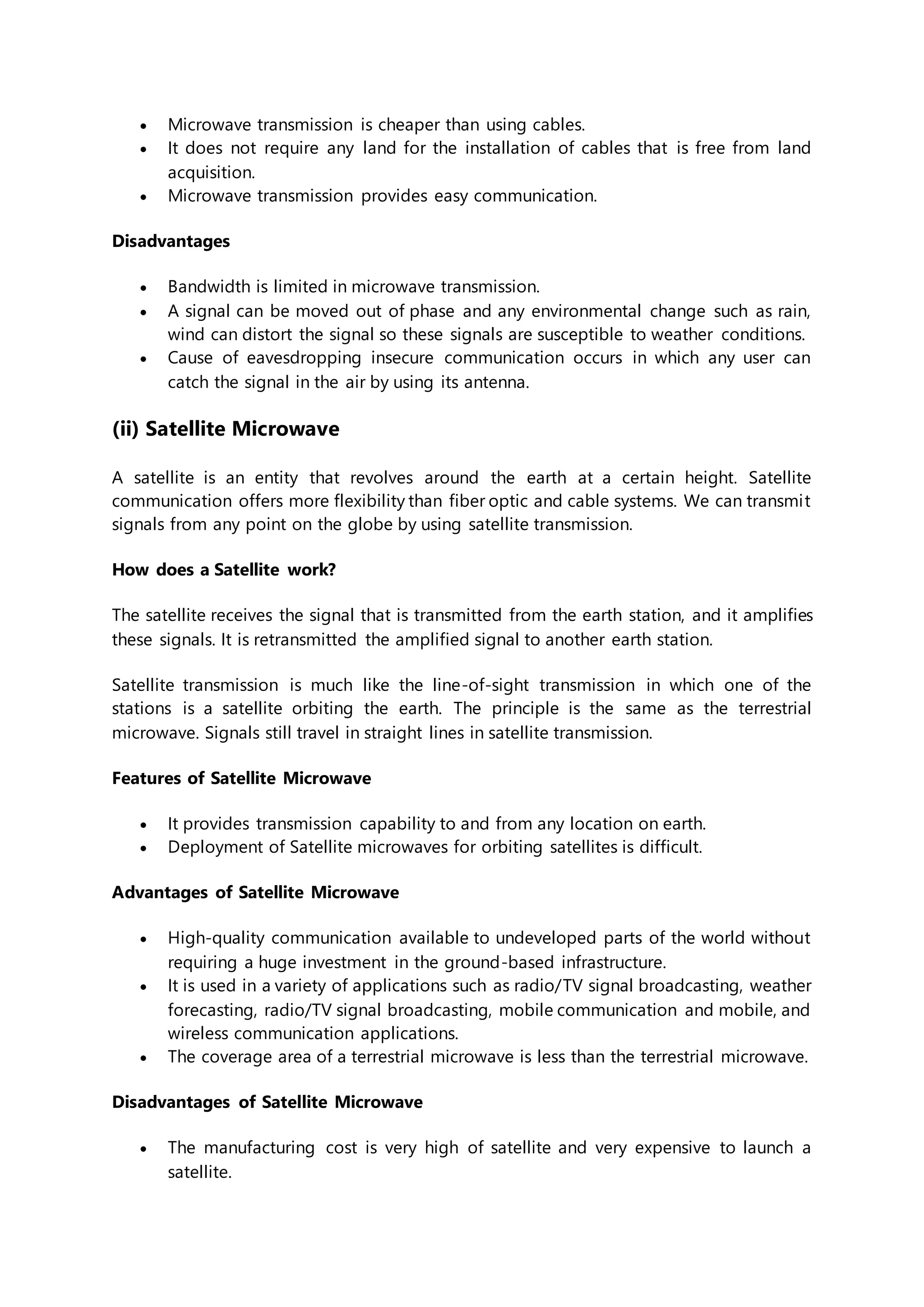Transmission media is the physical medium used to transmit data between a sender and receiver. The two main types are guided and unguided media. Guided media uses physical pathways like cables to direct signals over shorter distances at high speeds securely. Common examples are twisted pair, coaxial, and fiber optic cables. Unguided media transmits electromagnetic waves without physical pathways, broadcasting signals through the air over longer distances less securely. Common examples are radio waves, microwaves, and infrared waves used in wireless technologies.







